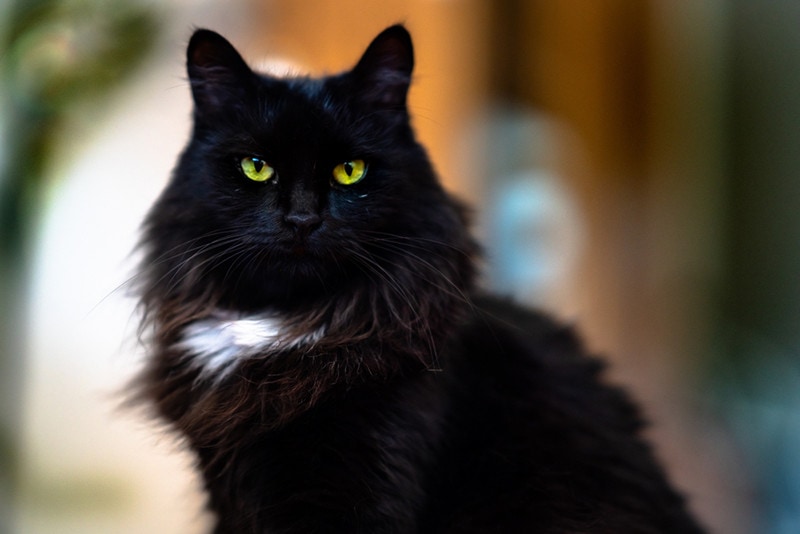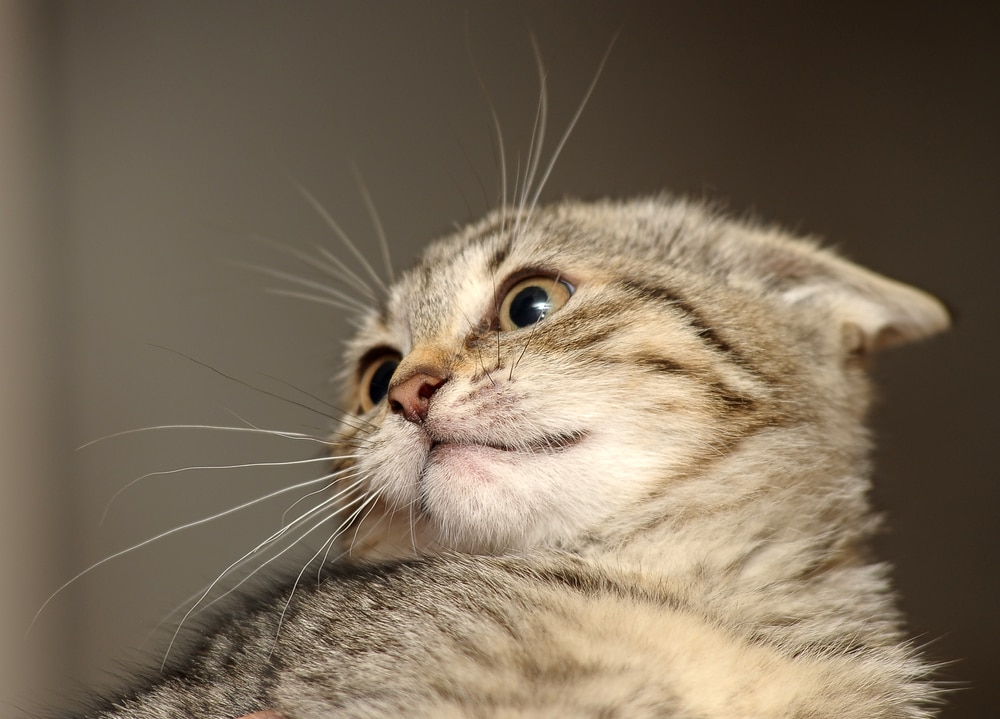How Can Cats Have Different Colored Kittens? Vet Approved Facts & FAQ

Updated on
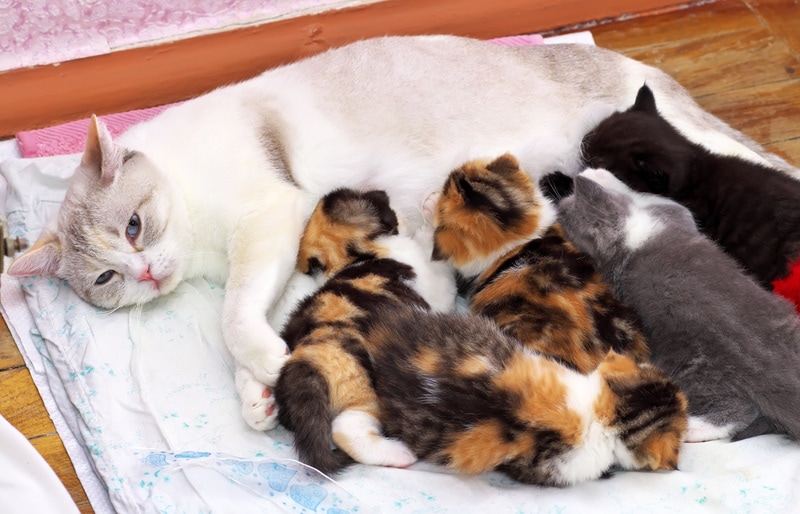
Kittens come in different colors and patterns, sometimes vastly different from their parents and littermates, which might make you wonder how. Their coats are based on two primary colors: red and black. The International Cat Association (TICA) states that all coat colors are variations of red (orange) and black, except for white, which isn’t a color but an absence of colors1.
There are recessive colors, like cream and blue, and dominant colors, like red and black. But how is a kitten’s color determined? And why is it different from their parents’ and littermates’ coats? Male kittens inherit their coat color from their mother and females inherit it from both her parents. Additionally, female cats in heat may also mate with more than one male resulting in kittens with different colors. The answer can get a little complicated, so let’s focus on the basics.
Where Does a Cat’s Color Come From?
Color is determined by the X chromosomes. The mother cat contributes one X chromosome to either a male or female kitten, while the father may contribute either an X chromosome to female offspring or a Y chromosome to male offspring. This means that a male kitten inherits his coat color from his mother because males only have one X chromosome. On the other hand, a female inherits potential colors from both her parents.
A cat’s genes and those of their parents impact their color and pattern. Dominant genes override different variants within the same gene, and a dominant gene can mask a recessive one. An example of this would be a black cat that carries the recessive blue gene (Bb). If the cat mates with another cat carrying the same recessive gene and their offspring inherit both, the kitten will be blue (bb).
Female cats in heat may also mate with more than one male if they can, which means that kittens in the same litter might have different fathers, contributing to a greater variation of colors. This is known as superfecundation.
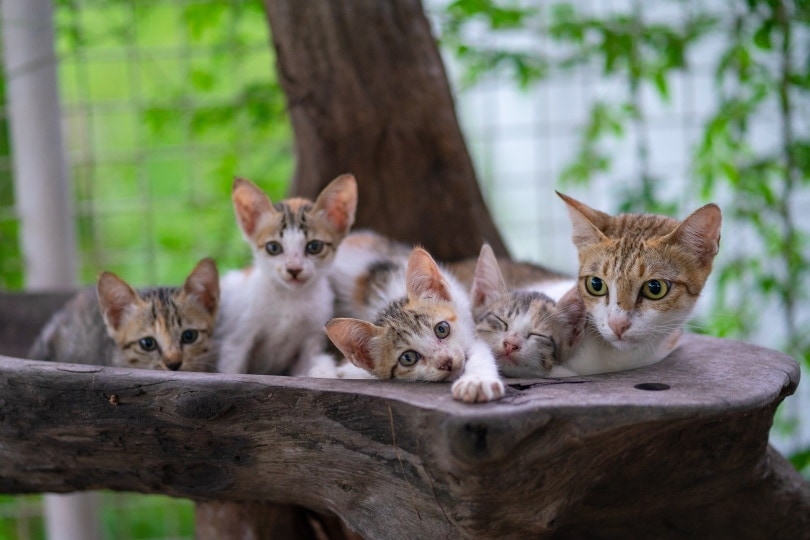
Ginger Cats
Orange or ginger cats are generally male, with only around a third being female. This is because the ginger gene mutation is carried on the X chromosome, and females have two X chromosomes. This makes the likelihood that she has two gene mutations on both chromosomes lower than the chance that a male will have it on one, as males have XY chromosomes. Unlike the X, the Y chromosome doesn’t carry coat color information, so males only need one mutation to be ginger.
White Cats
White is the result of a genetic anomaly that suppresses the real color of a cat. This might appear in patches through a cat’s coat, like those that have white chests or feet. Or it could appear all over, in which case the cat is completely white. This anomaly can pass to their offspring, but there is also just as much chance it won’t.
Deaf cats are also more likely to be white than any other color because the gene responsible for this color also causes deafness and blue eyes. This doesn’t mean all white cats are deaf or all deaf cats are white since other factors will affect these variations.
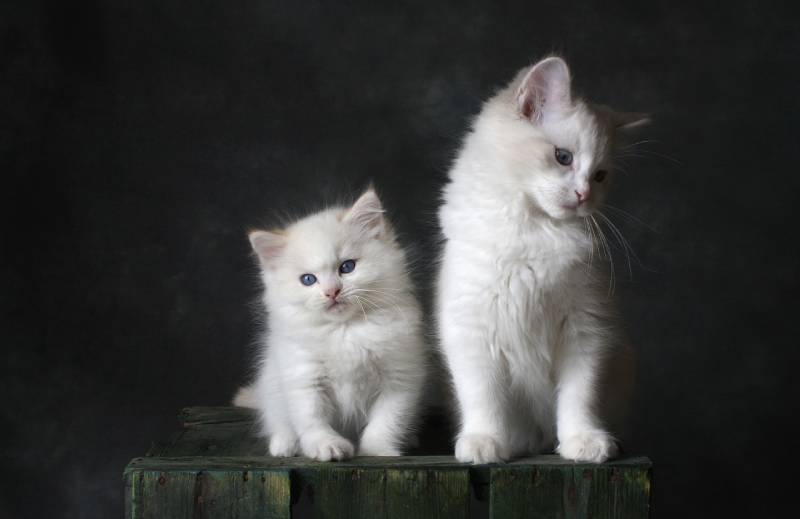
Tabby Patterns
All cats are actually tabby, but the pattern is masked in cats that have a solid color. You might notice “ghosting” on kittens or when adults sit in the bright sun; the hidden tabby pattern is more evident on some solid coats when illuminated by the sun. The gene responsible for the tabby pattern is agouti (A) and is dominant to non-agouti (a), also known as solid-colored cats.
The colors included in a cat’s tabby pattern are determined by the genes that were passed onto them by their parents.
- Classic Tabby: Generally, they are white, silver, and black with thick lines and swirling stripes
- Spotted Tabby: Rather than swirls or lines, they have spots
- Mackerel Tabby: Striped patterns with cream and white or brown markings
- Ticked Tabby: The hair shafts show different colors instead of it appearing as swirls, lines, or spots
Calico Cats
Calicos tend to be female since their X chromosomes determine the patterns. This might suggest that males can never be calico, but very rarely, males will inherit three chromosomes in the form of one Y and two X chromosomes. Because of this, most (but not all) male cats with XXY chromosomes are also sterile.
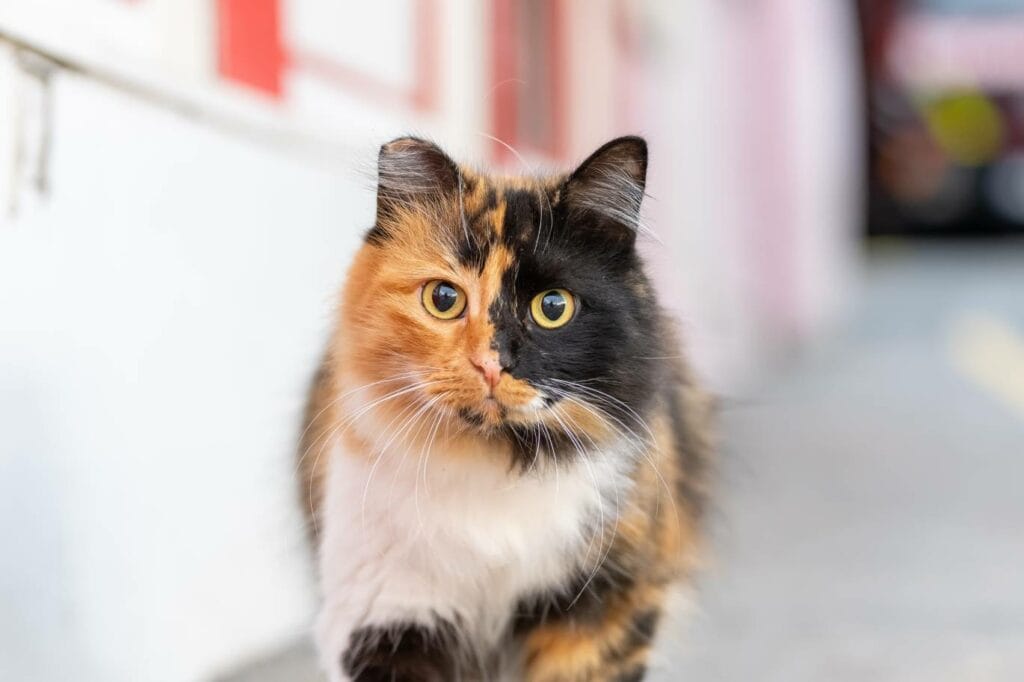
Final Thoughts
It’s easy to go down a complicated rabbit hole when looking into where a cat’s coat colors come from. So, we hope we’ve simplified the answer enough that you’re leaving today with a better understanding of why two parent cats can have such a colorful litter. You have to consider the genetics involved, meaning you’ll also need an idea of how many partners the mother had while in heat!
Featured Image Credit: ESOlex, Shutterstock


